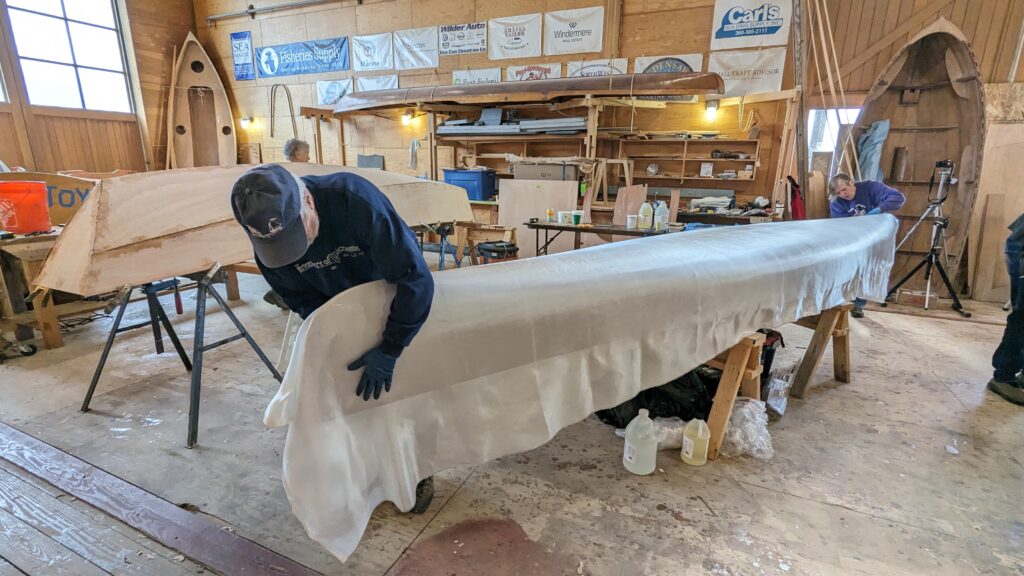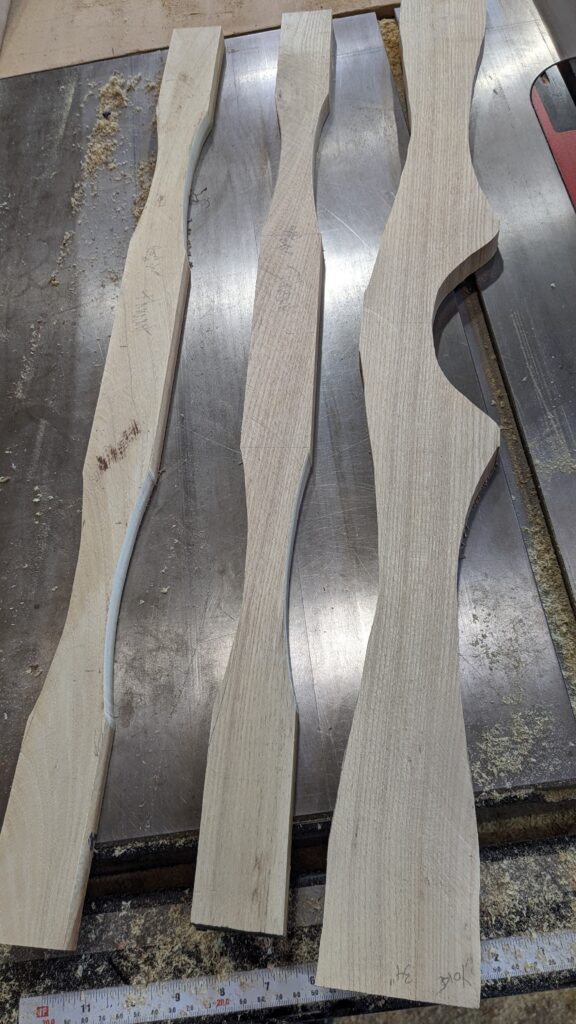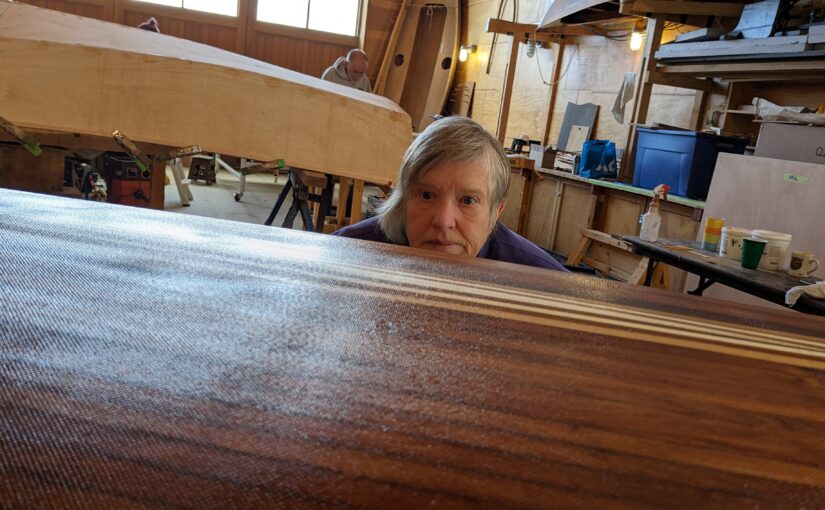
Today is Tuesday, March 12th, 2024. The big event today is Joel (the shop manager) making lunch for everyone: Bratwurst and beef brisket with cabbage and potatoes. That…and we are putting on the first coat of fiberglass.
We get up a little slower than yesterday but still make it into the shop at a reasonable hour. The canoe is still beautiful, more so because of the sealer coat of epoxy we put on yesterday. Our first task is to lightly (lightly!) sand the bumps and drips. The drips have to go, but if you are too energetic, the epoxy will warm up and you’ll be sanding bubblegum. Instead, we need to sand for a bit, then walk away like we don’t care about the drip anymore, and then later, when the epoxy has cooled off, we sneak up on it and sand it some more. Rich stops dilly-dallying around and gets out a sharp knife to shave off the drips.

With all the drips and bumps removed, we get to roll out the fiberglass cloth. We are putting 6-ounce cloth on the outside and 4 ounces on the inside. The designation number is the weight of the cloth per square yard. All of our cloth is 60 inches wide, so we don’t need to overlap the cloth to cover the full width of the boat.
The fiberglass cloth languidly drapes over the shape of the boat, giving the appearance of fine white silk in a wedding dress. It is shiny and smooth and conforms to the curves of the boat.
This timelapse shows the process of draping the boat in fiberglass, and then wetting it down with a first coat of epoxy. This first coat of epoxy doesn’t saturate the fiberglass. When we are done, we can still see the weave of the cloth. There is nothing more we can do, so we break for lunch. (At 11:30 am, I got the bright idea of using tape to create a digital clock that changes every half hour.)

After lunch, we begin work on the hardwood parts of the boat. This would seem innocent enough, but we run headlong into a debate about the difference in terminology between canoes and sailboats. In the world of canoes, we speak of deck plates, thwarts, yokes, and seats. In the larger world of boats, these are called breastplates and thwarts. In a canoe, you do not sit on a thwart. They are there to maintain the shape of the hull. In a boat, you sit on thwarts; a boat doesn’t have seats. A boat doesn’t have a yoke; canoes do. Before we can create a cut list for Joel, we have to agree on a common terminology. It’s a bit like charts versus maps. Hint: don’t ask for maps in a marine supply store.

We choose Black Locust for the thwarts, yokes, and seats. Who knows where these beautiful chunks of wood came from, but we are fortunate. After a bit of table saw and band saw work, we have rough shapes to work on tomorrow.
At 5:00, the epoxy & fiberglass are hard enough to accept a second layer of epoxy. This coat will fill the fiberglass cloth and leave the boat shiny and smooth. If we applied enough epoxy, this will be the last coat we need before pulling the boat off the strong back frame and turning it over.
Have you watched the credits of a movie? The list of contributors scrolls for a long time and it’s amazing how many people were required to produce a film. Likewise, many people have contributed to this boat. It started with Matthew, then continued with us, then also with Northwest Maritime Center and Joel. Scott with DuckWorks provided us with materials and guidance on fiberglass and epoxy, Rich with carpentry skills. It will be unclear who owns this boat since it has contributions of time and talents from so many people.
Late tonight, Matthew is flying in from New York City. I’m looking forward to his reaction when he sees how his boat has transformed.

